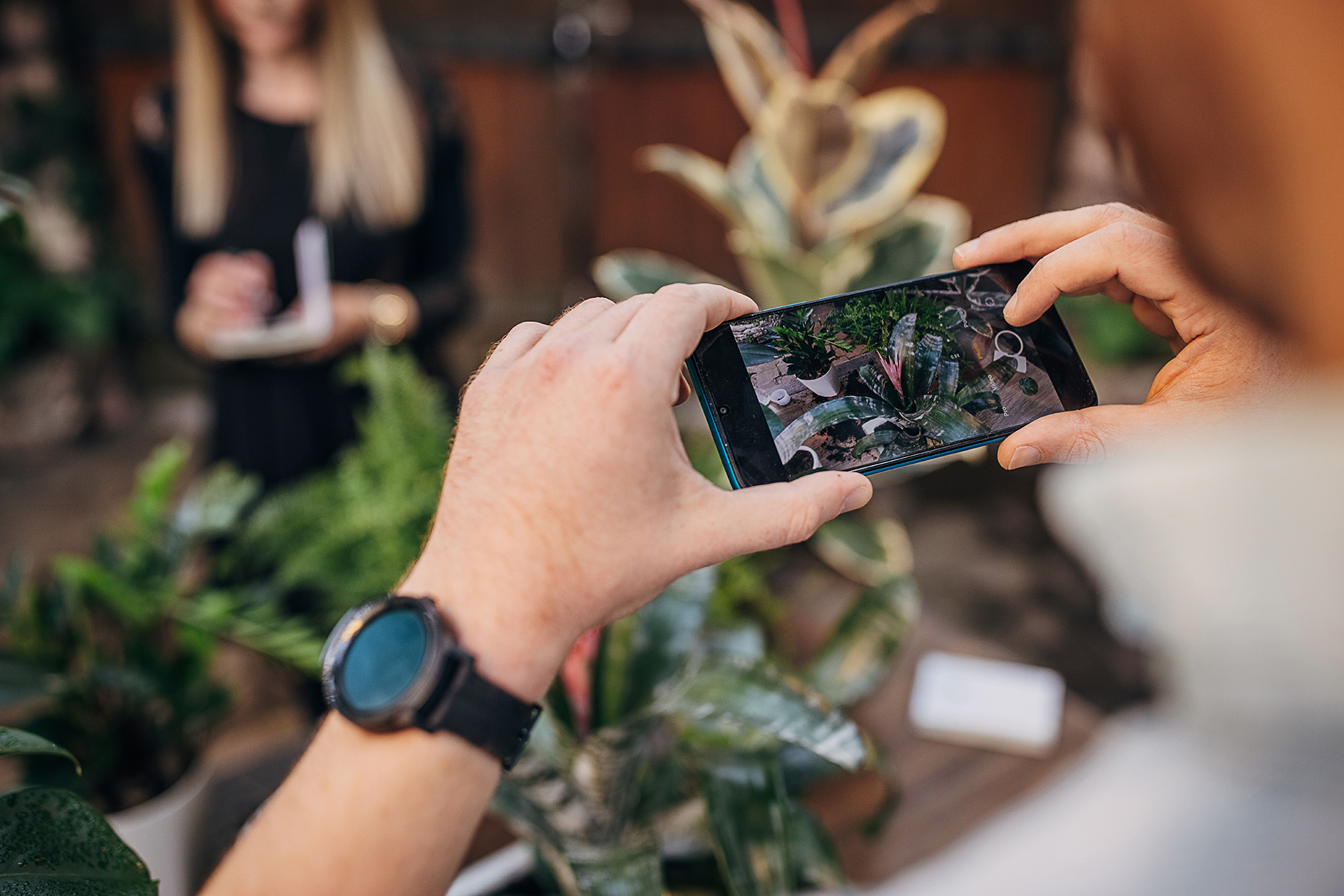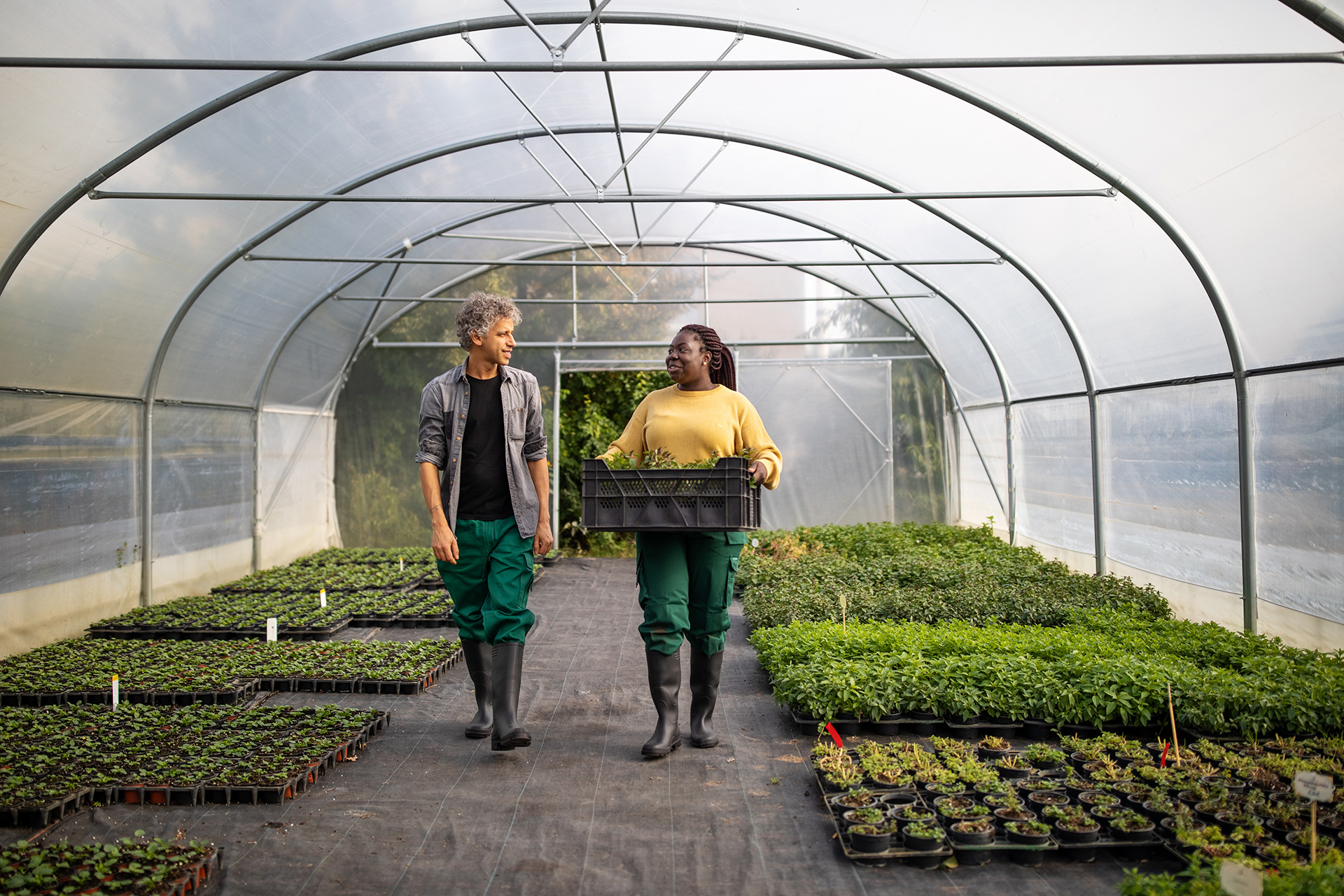Our store of the future must be a destination: full of inspiration, innovation, and sustainability
Interviewed by Jens Torchalla and Sirko Siemssen
Interviewed by Jens Torchalla and Sirko Siemssen

Plantagen – which sells plants and garden accessories in Norway, Sweden, and Finland – was taken over by a private equity group in 2016. Nina Jönsson took over as CEO in May 2020, following senior positions in other retail and consumer goods organizations. She talked to Jens Torchalla, a Partner in Oliver Wyman’s Retail & Consumer Goods Practice, and Sirko Siemssen, Global Leader of the Practice, about the plant store of the future, digitization, and working alongside private capital investors.
We have had a huge boost from the COVID pandemic. People were already interested in spending more time with nature, and in general people feel better when they are around plants. Then, when the pandemic hit, people shifted substantial parts of their spending towards redecorating their homes and buying products that we sell. Also, we were just about to launch a click-and-collect service anyway, so we accelerated that initiative immediately. And suddenly, lots of consumers who hadn’t ever purchased plants online did so. That instant boost helped a lot to digitize our business. In 2021, our online business ten folded from the year before, and now we plan continuing the growth journey.
However, it will be tough to sustain that trajectory. On the one hand, people are longing to go back to stores, to get out of the house, and to spend on things like travel instead. On the other, to grow the pool of accessible consumers, we still need to educate more, so that consumers are assured that plants will not suffer during delivery. With plants there's so much emotion – they are not just a product!
I think so! In food, everybody was always saying, “I will never buy my meat or my tomatoes online.” But now that people are used to it, they trust the quality to be the same. Of course, this is easier for younger consumers – but over 20% of our consumers are so-called “impatient achievers,” who don't want to make an effort or get soil in their cars. In a nutshell: We are early but firmly on a growth curve. It will all happen!
First of all, there is more to growth than digitization. For instance, we're looking into B2B opportunities – selling to municipalities, developers, and large-scale landscaping companies. But back to digital commerce: We are always scanning for new ideas and business models out there, such as all the new ones emerging around cut flowers. There's next-day delivery. There are subscription models. And there are apps for product identification: You see an amazing flower, take a photo, find out the name of the flower, and get directed to product offers and a lot more information.
Then, if you want to buy the flower, you click and find out everything about the product – where can you grow it, where it comes from, and how to take care of it. Maybe there's a huge community that likes that type of flower. Digitization will be really important, and it means we need to be and will be much broader in our offer. We can't just rely on what we have in the stores.

This question is top of our list, and we're trying to answer it as we speak. We’re building a new store in Oslo, and we're setting ourselves quite a challenging goal. It's not enough just to have a pretty store with nice plant products and merchandise. Instead, our store of the future must be a destination, full of inspiration, innovation, and sustainability.
This is instrumental to how we want to shape and develop our brand and move beyond a transaction-centric retail proposition. We are asking ourselves: How can the store attract schools and education professionals to learn about nature and how to plant and take care of plants? Stores that just have products and a layout designed for transactions are no longer sufficient.
There's a huge role for brands to play today, in a world of abundance and incredible speed. The orientation provided by strong brands is needed more than ever. And digitization is a huge opportunity, as you can communicate better and more directly what a brand stands for. You can scale awareness and recognition faster, and you can build ecosystems and direct customer engagement around the brand.
We need to operate in a fully transparent way to show where products come from and what materials are used. There is EU legislation coming up on traceability, as has happened with food. With the combination of cost and sustainability concerns, we obviously want to source as locally as we can and move sourcing closer to our own markets. We aim to operate with the highest ethical standards combating climate change, as we innovate to protect biodiversity and minimize waste.

Look, both models have their merits, and both can be successful. However, I do like decisiveness, accountability, and speed of impact. At large organizations, it takes longer on average to take a substantial decision, as often many departments and stakeholders are involved, and processes tend to focus on making sure we don’t make mistakes. Don’t get me wrong – I do like a shared agenda and common goals. But once too many people are involved, you not only lose speed, but also accountability.
The time horizon of private capital investments is different, and the North Star – profitable growth – is very clear. As a result, you cannot – and do not – spend months thinking about what to do. You don't have lots of resources either, so you rely much more on the management team and its experience. You work out the keys to drive value in the future, and then you decide and start pushing ahead and investing. The expectations of the owners are very clear: They want the leadership team to deliver and the CEO to set the direction clearly and with confidence and to follow up on it.
This includes driving innovation and making it happen. I was once driving to the office through an urban area, when I realized that someone must be sourcing and planting all the trees – and that it wasn’t us! We explored the idea a bit further, and very quickly we are launching a B2B site. I’m convinced that this can be a very substantial business for us – and we will make it happen!
Yes, I get bored if things take too much time. Here, we can do things very quickly.

Voices of the Industry
HOME
Voices of the industry
Foreword
How Retailers Are Turning Upheaval Into Opportunities
Rami Baitieh
To Be The Best Digital Retail Company, We Have To Put People At The Center Of Our Activities
Duncan MacNaughton
Consumer Goods Manufacturers must listen to their workforce
Silviu Popovici
we put sustainability at our core, to create positive change for both planet and people
Thomas Jonas
Fy will feed astronauts!
Marcel Haraszti
We made one of Europe’s most ambitious retail transformations happen during COVID
Malina Ngai
We’re working relentlessly to promote inclusion and diversity
Philippe Guettat
Premiumization has been key to the success of our wine and spirits brands
Nina Jönsson
Our store of the future must be a destination: full of inspiration, innovation, and sustainability
Richard McKenzie
We built our technology system for grocery
